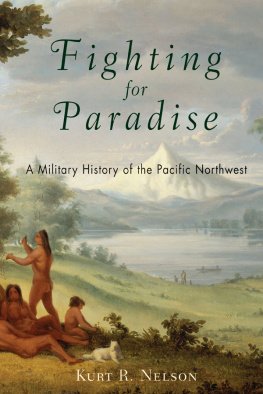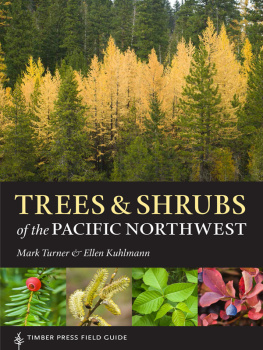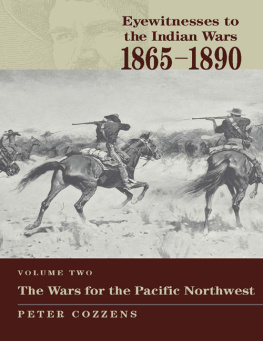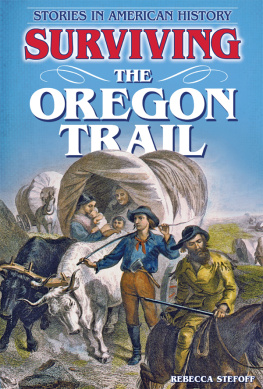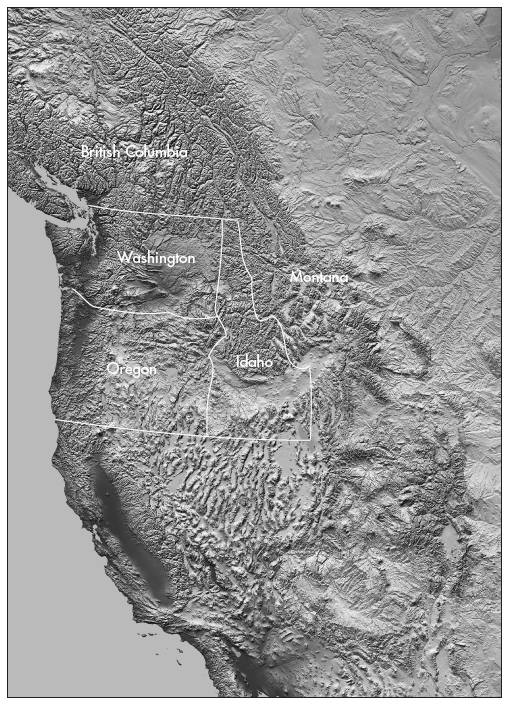Copyright 2021, 2007 Kurt R. Nelson
All rights reserved under International and Pan-American Copyright Conventions. No part of this book may be reproduced in any form or by any electronic or mechanical means, including information storage and retrieval systems, without permission in writing from the publisher, except by a reviewer who may quote brief passages in a review.
Oregon Country physical relief and present-day political boundaries. (JPL)
Introduction
When the topic of American military history arises and the discussion turns to battles on American soil, the first locations recalled are those of the Civil War. If further thought is given to the topic, perhaps American Revolution locales come to mind, and it is usually in the eastern half of our country where most Americans identify our military history. If directed to think of Indian battles, the collective thought moves west to Montana and the Battle of Little Big Horn, as well as other battles on the High Plains; and it is there where our reflections on the topic usually end.
Yet our collective thought should include the military history of the Oregon Country, a historical area encompassing more than 650,000 square miles over the present-day states of Washington, Oregon, Idaho, northern California, northwestern Wyoming, and western Montana and British Columbia in Canada. While most of the Pacific Northwests battles were small scale, particularly when contrasted with epic engagements such as Gettysburg, the wars fought here were as real and the regional battles were just as important to nationbuilding. The Oregon Territory, carved out of Oregon Country in 1846, experienced total war in the 1850s, with nearly thirty percent of the white and American Indian populations directly engaged in periodic combat. As Western civilization overwhelmed the Pacific Northwest, the balance of both populations felt the effects of warfare and feared invasion and attack. The fate of many different peoples rested on many of the battles fought within the Oregon Country.
This book is not about the forces that created the wars, nor is this book a history of the injustice done to the American Indians. It is true many of the Indians who lived throughout the Oregon Country suffered great loss and poor treatment at the hands of the whites, but they tooinflicted unjust acts on unsuspecting populations. Viewed by many Indians as invaders, the conflict with the settlers was inevitable. The whites were not willing to coexist with the native populations, and the pressure to eliminate the competition for the land was great. Equally true, is the fact that many of the Indian nations had a history of warfare that would have led to conflict with any large population moving into or through their homelands, white or American Indian.
The first U.S. Army fort was not intended as a permanent establishment. Fort Clatsop was constructed by Lewis and Clarks Corps of Discovery in 1805. It helped to establish the American claim to the Oregon Country.
The first real attempt at establishing a military base and settlement belongs to the Spanish. On May 29, 1792, the Spanish frigate Princesa anchored in Neah Bay at the northwestern tip of Washington state. They named the bay Baha de Nuez Gaona. There, they constructed a bakery, blacksmiths shop, and a fortification with six guns, among other structures. Their intention was to make Neah Bay a permanent Spanish colony. However, after discovering the limitations of the harbor, the Spanish gave up their efforts by the fall of 1792. Not until 1809 would the effort to establish a permanent settlement start.
What this book does is record the rich detail of the conflicts to seize the paradise of the Pacific Northwest. The first settlers were in the Oregon Country to exploit and to gain wealth from it. Fur was the source of new riches. It is often believed that it was almost mutually beneficial for the Indians and the traders to exist together, particularly under the rule of the British.
What is clear in examining the history is that the gain made was strictly by the Western powers encroaching on the American Indians; the British were often little better than the Americans in their treatment of the native populations.
When angered, the British lion roared with naval artillery and the complete obliteration of native populations. They never intended to establish large permanent populations. They were seen as less destructive because they were not creating permanent settlements and so there were fewer of them to interact with the Indians.
After the fur trade started to subside in the 1840s, war threatened as two nations, one great and one seeing the Manifest Destiny of its greatness, exerted their claims to paradise. The presidential election of 1844resulted in Manifest Destiny having a rallying cry of Fifty-four forty or fight! It was nothing short of an American declaration to possess the entire paradise of the Oregon Country and extend itself as a great nation from one ocean to another. Both powers gathered their forces and threatened war. Fortunately, the tensions between the British and the Americans resulted in nothing more than militant posturing and a dead pig.
The Anglo-American Pig War was in stark contrast to the bloody conflicts between the white and American Indian population. This book also deals with that portion of the Oregon Countrys history, with glory and shame on both sides.
If a roll call of famous Indian leaders were to be read, only one Indian from the Oregon Country might make the list: Chief Joseph of the Nez Perce. It is unfortunate that history has not recognized the leadership and vision of other Indians, such as Kamiakin of the Yakimas. Equally true, if a list were made of great Indian battles, probably none would be listed from the Pacific Northwest. But the scale of Steptoes battle was equal to that of Little Big Horn. Colonel George Wrights summer campaign of 1858 against the Spokane Indian coalition was grisly and destructive to Indian hopes. Only one American Army Indian fighter exceeded the success of Colonel Wright, George Crook, in his important defeat of the Apache in the 1870s80s, yet his skills were forged in the crucible of the 1850s60s Oregon Country Indian wars.
Finally, this book tells how the Pacific Northwest evolved militarily and the final battles fought in defense of Paradise. The history ends with a brief review of the Japanese attacks on the Pacific Northwest during World War II.
To understand the cultural conflict of white-American Indian wars, it helps to have a greater understanding of the Indians who lived in the Pacific Northwest. The perception of great tribes, such as the Sioux and Cheyenne, uniting to resist the western encroachment of whites does not hold for the Pacific Northwest. While we use the term tribe tohelp organize and understand American Indians with similar languages, life styles, and beliefs, it does not accurately describe the Indians of the Pacific Northwest.

